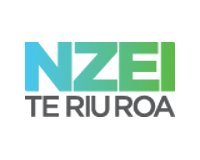Education funding cuts laid
bare
Embargoed against delivery until 2pm
Sunday 25th September
Government funding has failed
to keep pace with the real cost of education, leading to
cuts in essential resourcing for children's learning, NZEI
Te Riu Roa President Louise Green told 400 educators in
Rotorua today.
She labelled Government funding as "well below standard" in a report card [see below] issued to mark NZEI's annual conference which opened this afternoon. She warned that the situation would be exacerbated if the Government moved to bulk funding of schools, as has been proposed by Education Minister Hekia Parata.
OECD statistics released this month show Government funding for primary schooling is more than NZ $1500 per child below the OECD average per child amount.
Meanwhile, for more than five years, early childhood education has suffered the "double whammy" of a freeze in per child funding and a cut to quality teacher funding, Louise Green said.
“Kiwi
kids deserve the best education in the world, and as a
country we can afford to provide it. But Government funding
cuts are stretching our early childhood providers and
primary schools to breaking point,” she said.
“The
squeeze on early childhood funding is forcing some services
to reduce the number of qualified teachers and increase
group sizes, which is bad news for quality learning at a
young age.
“Meanwhile, the latest OECD statistics show
New Zealand is in the bottom half of developed countries for
investment in primary school education, spending just USD
$7354 per child compared to an OECD average of USD
$8477.
“It is an embarrassment for a wealthy country
like ours that primary schools receive so little money
compared to other countries.
“The underfunding of primary schools will be made worse by the Government’s decision to freeze schools' operations and support staff funding for 2017. We estimate that the freeze will actually equate to a 2.3% cut in real terms when adjusted by the education component of the labour cost index.
“The Government has also under-funded the Special Education Grant that supports students with disabilities. Between 2009 and 2016, the Special Education Grant fell by 1.8% when labour cost increases are taken into account, effectively cutting the per-student value of the grant.
“It’s just wrong that students with the highest level of education need are facing the brunt of Government funding cuts.
“The early child hood funding freeze and the low level of investment in primary schooling are symptomatic of a Government that wants a cut-price education system.
“As educators we know that better funding will lead to better learning and will provide the staffing, resources and time needed to ensure every child has the support they need to succeed.
“We are calling on the Government to lift the funding freeze on the school operations grant and to restore quality funding for early childhood education. We want to see an increased funding to primary schools to move us into the top half of the OECD."
NZEI Funding Cuts Report
Card
1. Government expenditure on primary
education
The latest OECD Education at a Glance report
released on September 16 shows that New Zealand falls below
the OECD average, spending just USD $7354 per child (NZ
$10,151) compared to an average of USD $8477 (NZ $11,701)
in other developed countries.
See: OECD Education at a Glance (Table B1.1 page
5)
2. School operational grant funding
In its May
2016 Budget, the National Government froze the school
operations grant that pays for essential school running
costs such as power bills and support staff wages.
The
operations grant is around 30% of school funding and has not
previously been frozen, even though previous increases have
not always kept pace with inflation.
Independent economic
researchers Infometrics say the freeze is actually
equivalent to a 2.3% cut to the real value of per student
funding when adjusted by the education component of the
Labour Cost Index.
To reverse the cut would require an
investment of between $40m and $65m in total operations
grant funding next year.
See: Infometrics Assessment of School
Funding
3. Special Education Grant
The Special
Education Grant (SEG) enables schools to provide an
inclusive education for students with special needs. The
grant is mainly used to employ teacher aides to provide 1:1
support for students’ additional learning
needs.
Between 2009 and 2016, the SEG fell by 1.8% when
labour cost increases are taken into account, decreasing the
per-student value of the grant in real terms.
In the
same period the identification of students with special
education needs has increased dramatically while there has
been a state sector cap - a freeze - on Ministry specialist
staffing (professionals such as psychologists, early
intervention and behaviour specialists and speech language
therapists).
4. Early Childhood Education
Funding for
our youngest learners in Early Childhood Education (ECE) has
been frozen since 2010.
Kindergarten services report the
rate of funding per child per hour remains less that it was
in July 2008 despite having to meet significant cost
increases over that time.
The Government cut funding in
2009 for services employing more than 80% qualified
teachers. These factors have led some services to reduce
the ratio and number of qualified teachers, leading to an
increase in group
sizes.




 Braden Currie: Sets Sights On The Ironman North American Championships In Texas
Braden Currie: Sets Sights On The Ironman North American Championships In Texas Whanganui Regional Museum: Historic Wedding Dress Unveiled, A Piece Of Marton’s Heritage
Whanganui Regional Museum: Historic Wedding Dress Unveiled, A Piece Of Marton’s Heritage Donovan Ryan: Local Runner Takes Out Frontrunner Christchurch Marathon
Donovan Ryan: Local Runner Takes Out Frontrunner Christchurch Marathon University of Auckland: Tributes Flow For Much Loved Pacific Leader Melegalenu’u Ah Sam
University of Auckland: Tributes Flow For Much Loved Pacific Leader Melegalenu’u Ah Sam NZEI: Ministry Of Education Cuts Will Disproportionately Affect Pasifika
NZEI: Ministry Of Education Cuts Will Disproportionately Affect Pasifika Day One Hapai te Haeata: Call To Action For Young Filmmakers Against The Backdrop Of Funding Cuts
Day One Hapai te Haeata: Call To Action For Young Filmmakers Against The Backdrop Of Funding Cuts